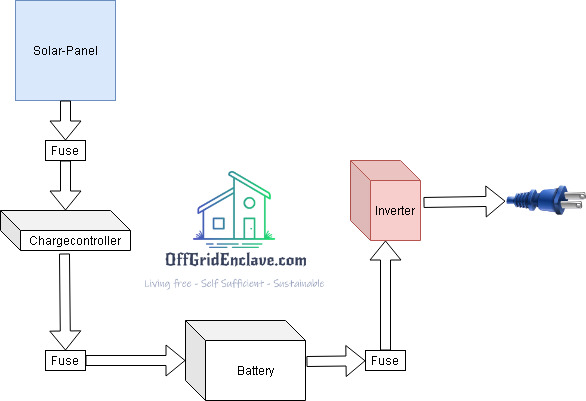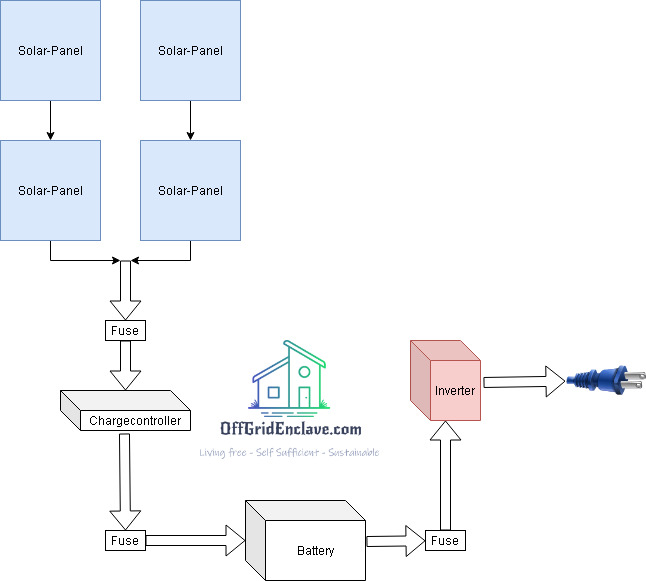
Overview of solar-system types
Photovoltaic systems are fascinating. They use the energy of the sun to generate electricity – emission-free, silent and functional for over more than 25 years.
“What components do I need and why?” “How exactly does the solar system generate electricity and how can it be stored in a battery“? We hear these questions asked frequently in the community and here we will have a look at the different options. In ascending order of complexity.
Plug and Play / Plug-In / Mini – Solar-System

This is not an OffGrid solution! It a requires grid connection to work.
For households with grid connection this is the easiest way to setup a small scale solar-system.
This is not a “solar-system” in the technical sense, but rather a household appliance that generates electricity.
If the electricity from the solarpanels is not sufficient for the operation of the household appliances, electricity simply flows from the grid.
Without a grid connection, these solar systems do not produce electricity.
Plug-in solar devices usually consist of 1 or 2 standard solar modules and an inverter that are directly plugged into your house grid.
In contrast to photovoltaic systems, the much smaller plug-solar devices are designed for private individuals to install, connect and use them themselves.
With a plug-in solar device, you make your own personal contribution to the energy transition.
Basic OffGrid / Island Solar-System

A basic OffGrid solar-system requires four main parts:
–Solarpanel
–Chargecontroller
–Inverter
–Battery
The solar panel provides DC voltage that fluctuates depending on the input quality. The charge controller then checks the battery level and modifies that DC voltage to fit the batteries charging profile. On the other end the Inverter will convert the DC voltage from the battery to the usual AC voltage used in your household (110 or 220).
You should always have switchable fuses in place to allow for safe maintenance and work on your equipment.

In a real world scenario you will likely have more then one solar panel to charge your battery. Solar panels and batteries can be connected in series or parallel. Series = Voltage increases, Parallel = Ampere / Ah increases. In the example above we use both. Two panels are connected in series, the increased voltage helps to reach the minimum required charging voltage. To add more watts/power to the system a second set of 2 panels is connected in parallel.
Real OffGrid Solar-System

To properly sustain electricity in a OffGrid scenario having more then one type of incoming power is highly recommended. For supporting the batteries during periods of bad weather or during the night a wind-generator or hydroelectric-generator is a very good addition. To cover emergency power needs and run power tools a gasoline or diesel generator will nicely round the OffGrid system up.
Advanced OffGrid Power-systems
For information and ideas on complex power-systems have a look at the Advanced OffGrid Power-sytems section.
If you are looking to add a OffGrid Solar-System to a house that already has grid-power read our quick howto for options.
